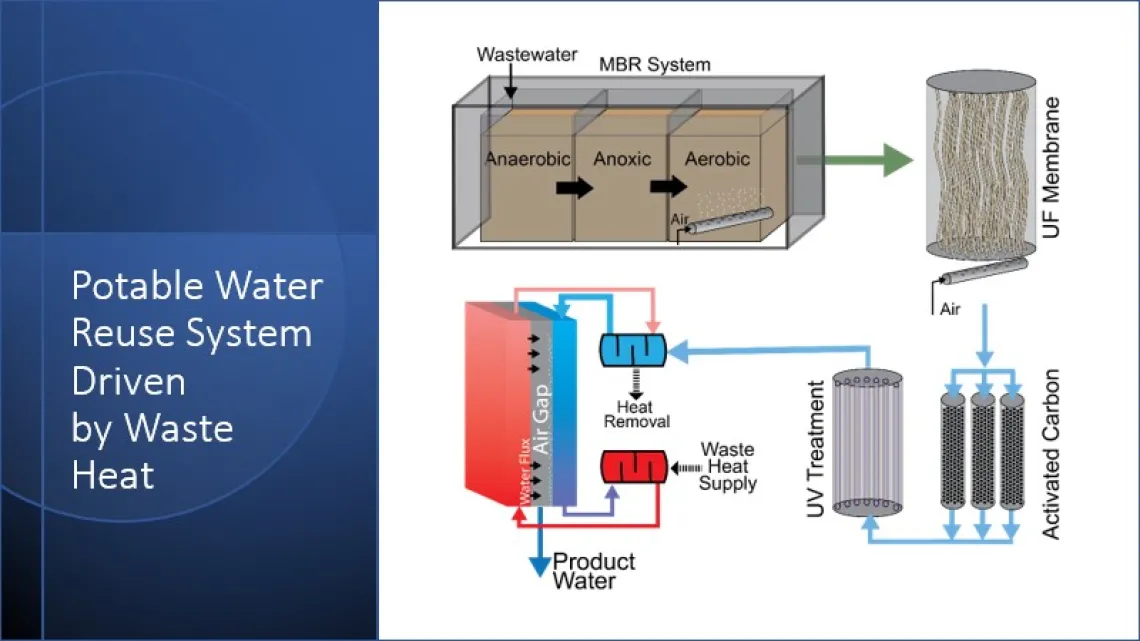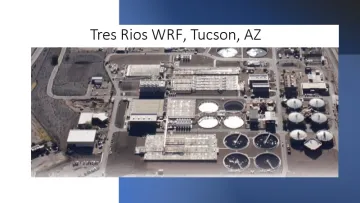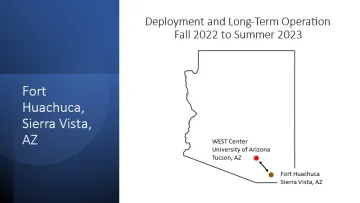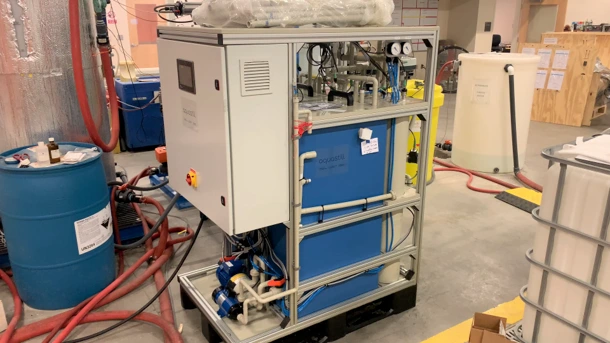WEST engineers develop potable water reuse system driven by waste heat

Signed in March 2015, Executive Order 13693 emphasizes “Planning for Sustainability in the Next Decade” and mandates that Department of Defense (DoD) facilities reduce potable water consumption by 36% relative to FY 2007 (1). While DoD succeeded in a 23.5% reduction as of FY 2016, most efforts were concentrated on conservation and increased water efficiency (e.g., high-efficiency fixtures and irrigation) (2). With further reductions from water conservation and efficiency limited, implementation of wastewater recycling programs for potable reuse is recognized as offering a significant opportunity to achieve stated water reduction and sustainability goals.
A project led by Associate Professor Andrea Achilli at WEST Center, with collaborators at the University of Southern California and University of Nevada, Reno, aims to provide a water reuse solution for DoD. The novel technology being developed and piloted by the team is an ultrafiltration membrane bioreactor – membrane distillation (MBR-MD) system.
As stated by the research team:
“This approach to water purification utilizes low electrical energy processes to accomplish high quality wastewater reuse objectives. In contrast, the competing technology for decentralized wastewater treatment and reuse is conventional activated sludge followed by reverse osmosis, which is an electrically energy intensive process that also generates a brine waste stream. Through ultrafiltration membranes and distillation processes, and use of waste heat existing on-site at DoD installations, the MBR-MD system is designed to produce potable-quality product water with minimal electrical energy input and minimal waste, resulting in lower operational costs as well as water and energy savings.”
The project, with a budget of $1,274,745, is funded by the U.S. Army Engineer Research and Development Center (ERDC). Currently in its second year, the overall project timeline is three years:
- Year 1 focused on system design and single component selection. The bioreactor was designed based on the U.S. Army Fort Huachuca base wastewater treatment plant (WWTP) influent water characteristics and desired MBR-MD production rate (1,000 liters/day).
- Year 2 emphasizes validation of the integrated system. The MBR-MD system will be evaluated under different treatment conditions to ensure that the system performance meets target water quality and energy consumption metrics. Removal of chemical and microbial contaminants will be assessed. The robustness of the system integration will also be tested during this year.
- The Year 3 task is deployment. The modular MBR-MD system will be moved to a fixed DoD installation (Fort Huachuca), integrated with an on-site waste heat source, and operated long-term with actual base wastewater to demonstrate system performance goals at demonstration scale.

The project is now nearing the end of Year 2. After testing of the MBR-MD system at UArizona’s WEST Center, the system was installed in a mobile container and transported for validation to the Tres Rios Water Reclamation Facility (WRF) in Spring 2022. The Tres Rios WRF is an ideal test location: It is the largest WWTP in Tucson, is located just two miles north of the WEST Center, and has an available source of waste heat from anaerobic processes.

When the final stage of the project launches in Fall 2022, the system will be deployed at Fort Huachuca in Sierra Vista, Arizona. Researchers will monitor the MBR-MD system’s long-term operation and performance.
In FY 2016, DoD’s fixed installations consisted of 284,000 buildings on 523 sites. These installations consumed 234 million gallons per day (MGD) of potable water and generated waste heat amounting to 138.6 trillion Btu/yr (40.6 billion kWh/yr) from sources such as standalone generators, gas-fired heaters and chillers, cooling at data centers, and more (2). The MBR-MD system developed by the WEST-led team enables beneficial use of both on-site wastewater and waste heat. Utilization of waste heat at these sites could produce, in principle, over 125 MGD of potable water/year, representing 53% of potable water consumption at DoD fixed installations in FY 2016.
References:
1. Executive Order 13693. Presidential Documents 80, (2015).
2. D. o. Defense, Department of Defense Annual Energy Management and Resilience (AEMR) Report Fiscal Year 2016. Office of the Assistant Secretary of Defense for Energy, Installations, and Environment, (2017).





